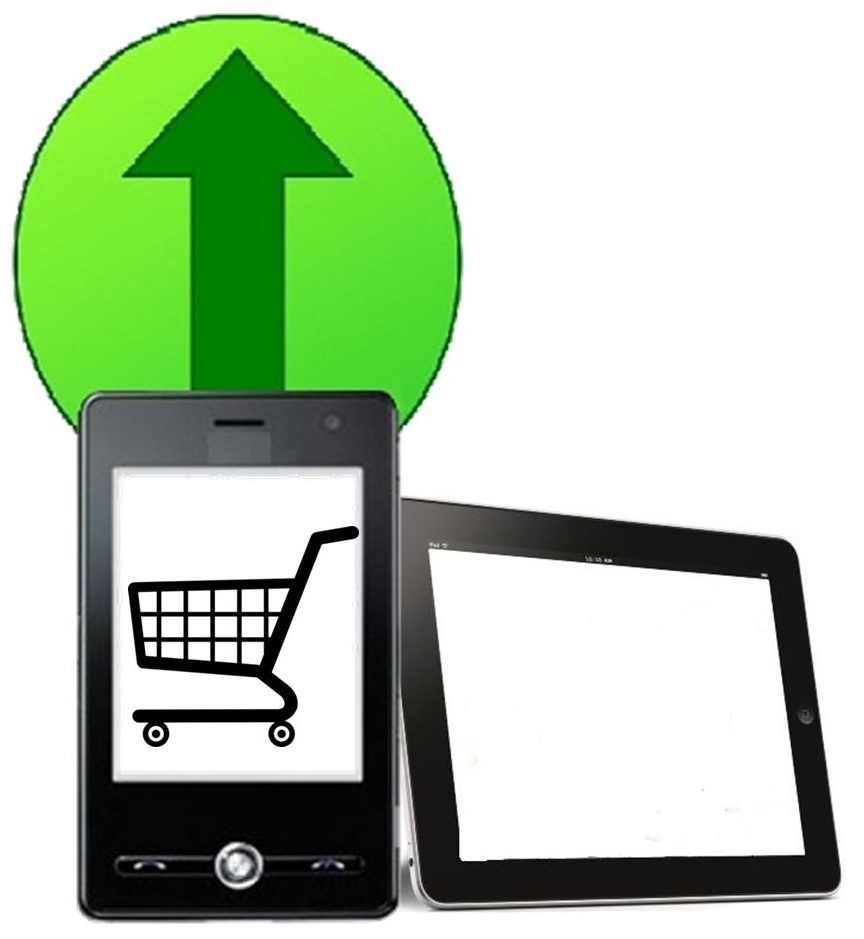Confidence is growing among mobile shoppers and the gap between the use of the devices is closing.
One of the primary struggles that have been faced so far in the mobile shopping world is in consumer confidence, and tablet commerce has always had far greater results in this area than the smartphone channel.
Even veteran online shoppers often struggle with their confidence and comfort on the smaller screen.
For several years, tablet commerce has seen considerably greater conversions than those experienced over smartphones, as consumers using those devices are more receptive to shopping than they are on the much smaller screens. This has been especially true over the iPad, specifically, although all of the larger screened mobile devices do perform better than smartphones when it comes to shopping, overall.
It has never been determined specifically why tablet commerce has done so much better than smartphone shopping.
 Smartphone conversions have traditionally lagged far behind those over tablet commerce. However, the most recent statistics are starting to show that the gap between the conversion over these two channels is starting to shrink. Though the latest Adyer platform data showed that mobile purchases grew to 52.6 percent in the May to August quarter when compared to the 46.8 percent over the quarter before.
Smartphone conversions have traditionally lagged far behind those over tablet commerce. However, the most recent statistics are starting to show that the gap between the conversion over these two channels is starting to shrink. Though the latest Adyer platform data showed that mobile purchases grew to 52.6 percent in the May to August quarter when compared to the 46.8 percent over the quarter before.
Ayder has speculated that this could be a summer trend, but it is causing many to watch the smartphone and tablet commerce figures over the next quarter to see if they continue in the same direction.
It has been guessed that the numbers may be moving that way as people become more dependent on their smartphones than their tablets. However, it could also mean that the supremacy of tablet commerce is coming to an end and smartphone users are becoming as comfortable shopping over their devices as their larger screen cousins.
At the same time, in Asia and South America, where 10.8 percent of online transactions are from smartphones and 5.8 percent are from tablet commerce, those larger screen devices are becoming more popular in those markets. The sheer scale of those markets could shift things back to tablets yet again, though the penetration of smartphones does remain well in the lead and if consumers have become comfortable with those devices, it will help to define that sector.
The company has made yet another purchase that has moved it further into the smartphone advertising sphere.
IBM has just announced that its purchasing spree has continued with its acquisition of Xtify, a mobile marketing company, which it has obtained for an undisclosed sum.
The company explained that the deal would give digital advertisers better interaction opportunities.
IBM explained that it would help mobile marketing companies to be able to increase their ability for interaction with consumers over mobile platforms through the use of in-app capabilities. This involves options such as running competitions, alerting customers regarding new promotions, and adding content to the apps themselves. The technology will be available within the Smarter Commerce offerings suite from IBM.
The acquisition of Xtify brings IBM mobile marketing for a number of sizeable customers.
 Along with the purchase of mobile marketing opportunities with Xtify, IBM will also be receiving a number of that smaller company’s notable customers, which include 20th Century Fox and Disney Stores.
Along with the purchase of mobile marketing opportunities with Xtify, IBM will also be receiving a number of that smaller company’s notable customers, which include 20th Century Fox and Disney Stores.
The vice president for digital marketing at IBM, Kevin Bishop, explained that the track record at Xtify for meeting agendas for mobile marketing is an ideal complement to the portfolio of offerings that are already available at IBM. He said that “With the increase of mobile devices, organisations across all industries are anxious to develop a mobile approach to engage their customers. The acquisition of Xtify provides new ways for our clients to foster a direct, one-to-one communication channel with their customers.”
The CEO of Xtify, Josh Rochlin, stated that he felt that bringing his company into IBM will provided them with the chance to meet a far wider range of customer needs than has ever been possible for that business. He said that the capability for mobile marketing and messaging at Xtify, in combination with the cloud infrastructure and analytics at IBM will give marketers a tremendous arsenal of rich content at with a global reach for informing and influencing a growing number of consumers who regularly use smartphones and tablets.
He went on to point out that the best time to provide mobile marketing content to customers is at exactly the time and place that they are seeking it. This acquisition greatly enhances ad relevancy.
 Smartphone conversions have traditionally lagged far behind those over tablet commerce. However, the most recent statistics are starting to show that the gap between the conversion over these two channels is starting to shrink. Though the latest Adyer platform data showed that mobile purchases grew to 52.6 percent in the May to August quarter when compared to the 46.8 percent over the quarter before.
Smartphone conversions have traditionally lagged far behind those over tablet commerce. However, the most recent statistics are starting to show that the gap between the conversion over these two channels is starting to shrink. Though the latest Adyer platform data showed that mobile purchases grew to 52.6 percent in the May to August quarter when compared to the 46.8 percent over the quarter before.
 Along with the purchase of mobile marketing opportunities with Xtify, IBM will also be receiving a number of that smaller company’s notable customers, which include 20th Century Fox and Disney Stores.
Along with the purchase of mobile marketing opportunities with Xtify, IBM will also be receiving a number of that smaller company’s notable customers, which include 20th Century Fox and Disney Stores.